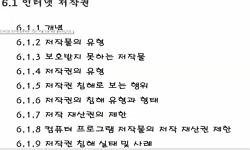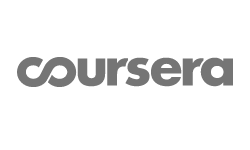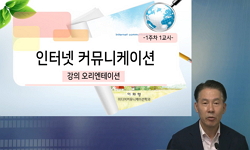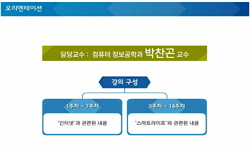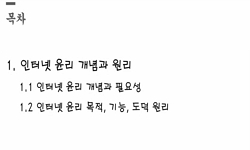사회의 변화와 발전에 따라 교육의 모습도 바뀌어가고 있다. 한 반의 학생 수가 줄고, 교육 기자재가 늘어나고, 학습관련 자료들이 풍부해지는 좋은 여건 속에서 교육은 한걸음씩 앞으로 나...
http://chineseinput.net/에서 pinyin(병음)방식으로 중국어를 변환할 수 있습니다.
변환된 중국어를 복사하여 사용하시면 됩니다.
- 中文 을 입력하시려면 zhongwen을 입력하시고 space를누르시면됩니다.
- 北京 을 입력하시려면 beijing을 입력하시고 space를 누르시면 됩니다.
視聽覺資料를 活用한 高等學校 高麗時代 文化史 敎育의 效率的 接近方案 = Efficient Approach to the Cultural History Education of the Goryeo Dynasty Era in High School Utilizing Audio-Visual Materials
한글로보기https://www.riss.kr/link?id=T11475270
- 저자
-
발행사항
서울 : 국민대학교 교육대학원, 2008
-
학위논문사항
학위논문(석사)-- 국민대학교 교육대학원 : 교육학과 역사교육전공 2008. 8
-
발행연도
2008
-
작성언어
한국어
- 주제어
-
발행국(도시)
서울
-
형태사항
viii, 69 ; 26cm
-
일반주기명
지도교수 :문창로
- 소장기관
-
0
상세조회 -
0
다운로드
부가정보
국문 초록 (Abstract)
사회의 변화와 발전에 따라 교육의 모습도 바뀌어가고 있다. 한 반의 학생 수가 줄고, 교육 기자재가 늘어나고, 학습관련 자료들이 풍부해지는 좋은 여건 속에서 교육은 한걸음씩 앞으로 나아가고 있다.
역사 교육에서도 진전이 있었다. 시대사에서 분류사로 교과서가 바뀌고, 교과서의 삽화와 지도는 모두 컬러로 전환되었다. 또한, 더욱 다양한 참고도서들과 보조 자료들이 나왔으며, 국정 교과서의 검인정 논의가 활발히 이루어지고 있다. 각 교실마다 최소한의 시청각 자료를 활용할 수 있는 장비가 갖추어지게 되었다는 것도 주목할 만한 일이다.
시청각자료는 이제 학교에서 더 이상 낯선 것이 아니게 되었다. 많은 참고자료들과 인터넷이 수업을 더욱 수월하고 깊이 있게 만들어 주고 있다. 이러한 시청각자료의 활용은 역사교과 특히 문화사 분야의 수업에서 빛을 발한다.
문화사 수업에서 시청각자료를 활용하는 방안은 크게 세 가지로 나누어 생각할 수 있다. 보조 자료의 활용과 인터넷의 활용, 그리고 타 교과와의 연계학습이 그것이다. 이러한 접근 방법으로 주요한 시청각자료 즉, 사진·회화·지도·영상물 등을 수업에 이용할 수 있고 그것은 문화사 교육에 많은 도움을 준다.
그러나 이와 같은 시청각자료의 활용은 실제 수업 시간의 부족과 기본 자료인 교과서의 한계, 무분별한 시청각자료의 사용 등으로 문제점이 제기되었다. 이 같은 문제점을 해결하고 더 나은 시청각 자료를 활용한 문화사 수업을 진행하기 위해 그 방법을 모색하였다. 곧 시청각자료의 성격과 분류, 문화사 수업과 시청각 자료와의 상관관계를 살펴보고, 그것을 바탕으로 하여 고려시대 문화사에서 구체적으로 시청각자료를 활용하는 방안을 강구하였다. 예컨대, 보조 자료를 활용할 수 있는 방법, 인터넷을 이용할 수 있는 방법, 타 교과와 연계할 수 있는 방법을 각각 활동지, 역사신문, 수업지도안을 짜 봄으로써 구체화시켰다.
시청각자료를 활용한 역사교육은 일차적으로 학생들의 흥미를 끌 수 있을 뿐만 아니라, 시각과 청각 즉 감각을 이용한 학습이 가능하게 되어 역사를 머리로만이 아닌 느낌과 직관을 동원하여 이해하는 경험을 할 수 있게 한다. 또한 자유로운 역사적 사고력을 통해 창의력 배양에 도움을 주며, 더욱 생생한 역사 학습을 가능하게 한다.
모든 수업의 기본이 되는 것은 교사의 열정이 바탕이 된 수업 준비일 것이다. 변화해 가는 교육의 방법을 숙지하고, 시의적절하게 활용하여 학생들에게 흥미롭고 이해하기 쉬운, 그리고 생생한 역사 교육을 하는 것은 현재의 역사 교육이 해야 할 중요한 과제일 것이다.
다국어 초록 (Multilingual Abstract)
The form of education has been changing as society changes and develops. Education is gradually progressing in the favorable educational environment where the number of students in class is reduced, educational materials have increased and materials r...
The form of education has been changing as society changes and develops. Education is gradually progressing in the favorable educational environment where the number of students in class is reduced, educational materials have increased and materials related to learning become abundant.
History education also has been making progress. Text books have changed from the era history to the history of classification and illustrations and maps have been changed to be in full color. Also, more diverse reference books and auxiliary materials have come out and the official approvals of government designated textbooks are being actively discussed. Noteworthy is the fact that every class has equipment for utilizing basic audio-visual materials at the least.
Audio-visual materials are now no longer unfamiliar in school. Lots of reference materials and the Internet make class work easier and meaningful. Such utilization of audio-visual materials becomes more effective in history class, particularly in cultural history class.
Ways to utilize audio-visual materials in cultural history class can be divided into three, namely, utilization of auxiliary materials, utilization of the Internet and class work connected with other subjects.
Taking this approach, important audio-visual materials such as pictures, paintings, maps and video images can be used in class, and it is very helpful to cultural history education.
However, such utilization of audio-visual materials can pose problems resulting from shortage of school hours, limitation of text books which are basic materials and indiscreet use of audio-visual materials. Ways to resolve such problems and to have better cultural history class using audio-visual materials were explored as follows. This research examines correlation between properties and classification of audio-visual materials and between cultural history class and audio-visual materials, and based on this, it explores the ways to concretely utilize audio-visual materials in class learning cultural history of the Goryeo Dynasty era. For example, the methods of utilizing auxiliary materials, the methods of utilizing the Internet and the methods of connecting with other subjects are materialized through preparing journals of activities, history newspaper and teaching plans
History education using audio-visual materials not only draws interest of students first but also enables the students in class to use the senses of sight and hearing and makes them experience understanding through senses and intuition rather than just through using their head. It is also helpful to nurturing creativity through power of free thinking about history and enables students to learn more vivid history.
Basics of all class work should be preparations for class, based on teachers’ enthusiasm. Being well acquainted with, and timely utilization of, changing teaching methods and thereby providing students with interesting, easy and vivid history education should be the important task of current education of history.
목차 (Table of Contents)
- Ⅰ. 序論 = 1
- Ⅱ. 문화사 관련 수업의 실태와 과제 = 6
- 1. 문화사 교육의 현황과 과제 = 8
- Ⅲ. 문화사 교육에서 시청각 자료의 성격 = 10
- 1. 시청각 자료의 성격과 종류 = 10
- Ⅰ. 序論 = 1
- Ⅱ. 문화사 관련 수업의 실태와 과제 = 6
- 1. 문화사 교육의 현황과 과제 = 8
- Ⅲ. 문화사 교육에서 시청각 자료의 성격 = 10
- 1. 시청각 자료의 성격과 종류 = 10
- 2. 문화사 교육에서 시청각 자료의 의미 = 17
- Ⅳ. 교과서 수록 시청각 자료의 검토 = 21
- 1. 교과서 시청각 자료의 분류 = 21
- 2. 교과서 시청각 자료의 내용 검토 = 28
- 3. 교과서 시청각 자료의 한계와 문제점 = 34
- Ⅴ. 효과적인 시청각 자료의 활용방안 모색 = 37
- 1. 보조 자료의 활용 = 37
- 2. 인터넷 자료의 활용 = 41
- 3. 타 교과와 연계방안 = 47
- Ⅵ. 結論 = 54
- 參考文獻 = 57
- Abstract = 62
- 附錄 = 64





